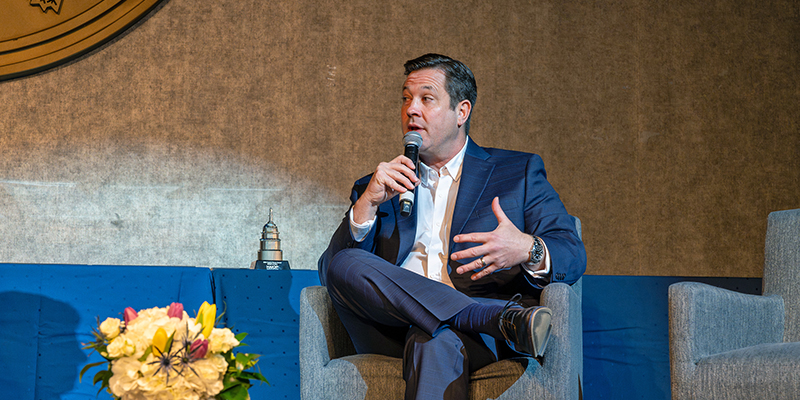Innovation districts – small geographic areas within cities that feature high concentrations of innovative firms and entrepreneurial activity – are widely believed to be an effective way to stimulate the formation and growth of knowledge-intensive businesses. They can take a variety of forms, can be found in many different settings and include a wide range of real estate products and design features. A report prepared for and published by the NAIOP Research Foundation this July offers unique insights into the factors contributing to the success of these projects, as well as the challenges they must frequently overcome.
“Case Studies in Innovation District Planning and Development,” by Dustin C. Read, Ph.D., J.D., an assistant professor of property management and real estate at Virginia Tech, presents case studies of four projects in different settings and phases of development. It also offers suggested “best practices” for real estate practitioners and policymakers involved with or considering these types of mixed-use projects.
“The Rise of Innovation Districts: A New Geography of Innovation in America” and “One Year After: Observations on the Rise of Innovation Districts” provide additional background on urban innovation districts in the U.S. and Europe, drawing from Brookings Institution research. These articles indicate that while some innovation districts have the critical mass of economic, physical and networking assets necessary to generate the vitality that such districts demand, many still “have significant work ahead to understand the rising value of ‘place’ in the innovation ecosystem and leverage or reconfigure their physical assets to create dense and dynamic communities,” as the “One Year After” piece states.
Project for Public Spaces (PPS) also provides guidance to those interested in developing innovation districts through its Bass Initiative on Innovation and Placemaking, a collaboration between PPS and Brookings. PPS’s “8 Placemaking Principles for Innovation Districts” stresses the importance of identity, diversity, continuity, sociability, proximity and more. It suggests that “to truly empower placemaking as a strategy for accelerating innovation, districts must experiment with new models of Place Governance. This means breaking down silos between disciplines and addressing issues with integrated strategies of policy and place. … Ultimately, it means devolving more powers, responsibilities, and funding to the district level.”
The NAIOP report includes case studies of the Cortex Innovation Community in St. Louis, Missouri; SkySong, the ASU Scottsdale Innovation Center, in Scottsdale, Arizona; Tech Center at Oyster Point in Newport News, Virginia; and Technology Square in Atlanta, Georgia.
According to Brookings research, other innovation districts can be found in:
- Boston, Massachusetts.
- Cambridge, Massachusetts.
- Brooklyn, New York.
- Detroit, Michigan.
- Philadelphia, Pennsylvania.
- Pittsburgh, Pennsylvania.
- Seattle, Washington.
Internationally, innovation districts are located in:
- Barcelona, Spain.
- Berlin, Germany.
- Copenhagen, Denmark.
- Manchester, England.
- Seoul, South Korea.
- Stockholm, Sweden.
- Toronto, Canada.
New districts are emerging in:
- Albuquerque, New Mexico.
- Chattanooga, Tennessee.
- Chicago, Illinois.
- Oklahoma City, Oklahoma.
- San Diego, California.
- And beyond.
According to a recent Business Insider article, “The London Olympic Park Is Becoming One of Europe’s Largest Technology Hubs,” British developer Delancey and technology consulting firm Entiq are teaming up to develop a new innovation center in the Queen Elizabeth Olympic Park in East London, an emerging innovation district that “has been quietly transforming itself into one of Europe’s largest technology clusters over the past four years.” The center is scheduled to open in the first quarter of 2017.
Are you familiar with any other new innovation districts being planned or developed? What lessons do they offer developers and other CRE professionals? Let us know by posting a message in the comment box below.
Image courtesy of Lee & Associates














